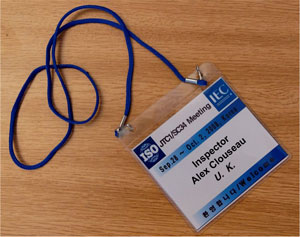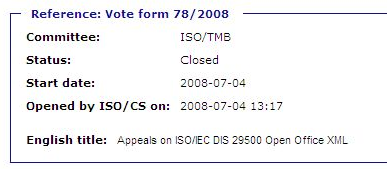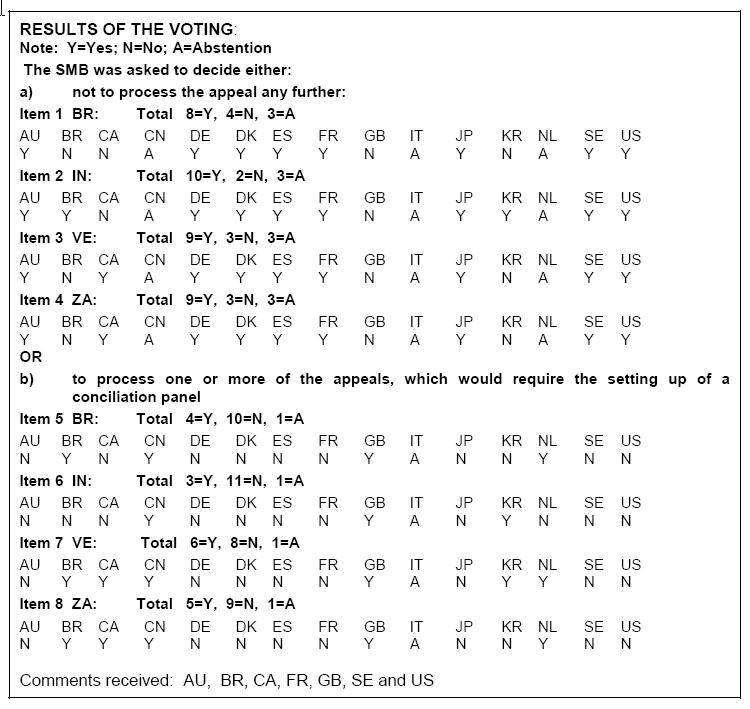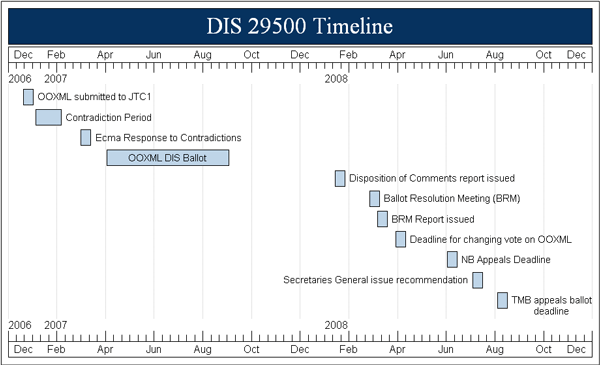Alex Brown is saddened that I did not attend the JTC1/SC34 Plenary in Korea last week. You can view his photo essay and lament on my absence here.
[A] question being asked along the committee corridors by perplexed NB members is whether IBM has withdrawn its staff from participation SC 34. I have no idea, but IBM people are certainly conspicuous here by their total absence.
Well, I’m truly touched, and by way of reciprocation maybe I can help Alex and any other similarly perplexed attendees understand the situation better.
First, it will help if we start by taking a look at recent SC34 meetings and what the attendance record (publicly accessible) says:
| Date | Location | Total Attendance | Size of US Delegation | # of IBM/OASIS Participants | # of Microsoft/ECMA Participants |
|---|---|---|---|---|---|
| Nov 2004 Plenary | Washington DC | 25 |
6 |
0 | 0 |
| May 2005 Plenary | Amsterdam | 28 | 4 | 0 | 0 |
| Nov 2005 Plenary | Atlanta | 22 | 4 | 1 | 0 |
| May 2006 Plenary | Seoul | 30 | 4 | 2 | 2 |
| Mar 2007 Plenary | Oslo | 37 | 6 | 0 | 5 |
| Dec 2007 Plenary | Kyoto | 52 | 3 | 2 | 12 |
| Apr 2008 Plenary | Oslo | 37 | 3 | 1 | 8 |
| July 2008 Ad Hoc 1 | London | 20 | 1 | 1 | 10 |
| Oct 2008 Plenary | Jeju Island | 35 est. | 2 est. | 0 est. | 12 est.
(estimates from Alex Brown, since no official attendance has been published) |
To put it in perspective, the US SC34 shadow committee currently has around 20 members. Before Microsoft stuffed it we had around 7. Regardless, the US SC34 mirror committee typically sends a delegation of 2 or 3 people to international meetings. IBM attendance at these meetings has varied from 0 to 2. It really depends on where the meeting is being held. If it is being hosted by an NB where an IBM employee is a member, then he will typically attend. If something is on the agenda that I find interesting, then I’ll typically attend regardless of location.
Now what is really interesting is how Microsoft has increased its attendance over the years, something Alex does not mention and presumably does not find fault with. I remember introducing myself to the first Microsoft attendee at a SC34 Plenary back in 2006. He was an attorney, from Microsoft’s anti anti-trust department. An odd person to send to a technical standards committee meeting, don’t you think?
Since then, Microsoft’s representation has swelled so it now comprises 20-50% of any given meeting. And that does not count those additional “independent” companies and contractors that are employed by Microsoft to create OOXML convertors or to consult with on OOXML matters. I’m only counting those people who explicitly list “Microsoft” or “Ecma” as their corporate affiliations.
I think you’ll find no other case in SC34 attendance records of a single company sending more than a single representative. Everyone else in the world sends one person. IBM once sent two people. Microsoft sends ten or a dozen.
Despite Microsoft’s successful attempt to stuff SC34, as they did NB’s around the world, participation from IBM remains in the range of 0 to 2 participants. I’d be hard pressed to justify the expense of any greater attendance. The real work on ODF goes on in OASIS. That’s where we put our people, where they can be most effective on the technical topics related to ODF.
Alex, of course, misses all this. Sitting in a room full of non-technical Microsoft employees, the only unusual thing worth mentioning is my unclaimed badge. Good job as always, Inspector Clouseau!

In any case, the greatest concern should be given to that last row in the table, giving the attendance of the recent Jeju Island Plenary. Although the resolutions of this meeting have been posted and discussed, they lack any record of the actual attendance of this meeting. It has been the constant practice of JTC1/SC34, for many years, to record the attendance of their meetings and to post this document to the SC34 document repository and to make it publicly accessible. But in this case, the attendance record is missing entirely. It isn’t even available to SC34 members.
What are they afraid to reveal? Exactly how many Microsoft employees were at this meeting? The trend certainly has been upward. But this information is not available. Is Alex, the Convenor of WG1, only going to publicize my absence, but then fail to report who actually attended his own WG meeting? Is Alex going to express pleasure in saying “In the event this went extremely smoothly: all resolutions passed with unanimous consensus” without mentioning who exactly was there to vote for these resolutions?
I hope this is not yet a further sign that JTC1/SC34 has taken a decent into vendor domination and reduced transparency.
Oh, and where was I? I was on vacation. (Yes, I am allowed vacation). I was in Colorado, spending some time above the timberline and among the rocks.




